Freedom Reflex: The Photographs of Liu Xia
by A. D. Coleman, critic and curator
The Tang-dynasty poet Wang Jian (766-830) wrote a lyric in the patient voice of a wife stoically contemplating her husband’s long absence. Roughly translated, it bears the title “Stone of Love,” and goes as follows:
On this hilltop I wait for you,
The river below quietly flowing.
Never moving or looking homeward,
Standing here still, I become a stone.
Days and nights pass, rain and snow,
Till you return so I can speak again.
•
Liu Xia’s photographs speak volumes.
To make them, she employs the simplest of means: an old Russian-model twin-lens reflex camera and black & white roll film she can process herself in her home darkroom — generic analog tools, materials, and processes that haven’t changed radically in over a century. Through this camera’s lens she addresses subject matter no less elementary: a cluster of small dolls from Brazil, gifts from a friend, that she calls the “ugly babies,” juxtaposed with each other and simple props (a birdcage, a heap of cigarette butts, tea candles, scraps of cloth, stacks of books, a jar, some flowers) and then configured on a table, a bookshelf, a chair, a couch, a mirror. She registers these scenarios in her negatives with no special effects (save for occasional double exposures), using only available light. She develops the results in her home darkroom.
On rare occasions she takes her dolls outdoors, to the beach or what looks like a barn or cowshed, to direct their performances in other settings. In a few cases one of them interacts visibly with a human being, boldly confronting some oversized fingers or perching like a parasitic twin on the shoulder of a man who resembles strikingly her husband, the writer and activist Liu Xiaobo; another suffers the crushing squeeze of a giant hand. Sometimes she dispenses with the dolls entirely, draping her fingers with dark cloth to turn the visible tips thereof into featureless faces atop oddly feminine shrouded figures, mourning and bearing witness. Or she merely knots and configures a dark silk scarf into dimensional forms to examine, or scrutinizes some slowly decaying vegetables.
We might consider this a form of child’s play, albeit freighted with all the gravity and emotional identification that children bring to such games. Taken out of context, considered merely as another body of work presented to the international image community, it’s hard to imagine anyone finding these images, or their patently introverted maker, dangerous. Yet Liu Xia, though never charged with any crime, has lived under house arrest in their Beijing apartment since January 2011, this incarceration following the October 2010 announcement in Stockholm that Liu Xiaobo, already imprisoned on trumped-up charges, had received the 2010 Nobel Peace Prize. Only her mother has permission to visit her on occasion. And these pictures, extracted under the government radar by the French economist and social commentator Guy Sorman, cannot be exhibited or published in the People’s Republic even though, like Liu Xia, they have broken no laws.
•
Thus we must consider these nominally mute images and their unassuming, reticent creator as somehow quite vocal and deeply threatening to what the Chinese Communist Party likes to refer to as “social harmony,” by which they mean their own unchallenged grasp on power and control over their 1.4 billion subjects.
Statistically, of course, Liu Xia and Liu Xiaobo have no significance as members of a population that size. Yet the totalitarian mind cannot allow exception; permitting even a single citizen to adopt a shape other than that of the “mold” that Mao Zedong notoriously devised for his people threatens the hegemony of that matrix. The modern totalitarian state does not afford anyone the luxury of such divergence.[1] “Propaganda cannot be satisfied with partial successes, for it does not tolerate discussion,” as Jacques Ellul wrote half a century ago; “by its very nature, it excludes contradiction and discussion.”[2]
Some would argue that the new China, with its capitalism-friendly economic policies, power-hungry princelings, flamboyant billionaires, and rampant governmental corruption, has moved away from its totalitarian past. But, even if so, the Tiananmen Massacre is little more than two decades past, still fresh in the memories of many. Meanwhile, a new generation has emerged whose access to information and communication via social media make Procrustean Mao-style “molding” all but impossible — a fact that the old guard in the current regime, with their limited grasp of these technological and sociological shifts, fail to comprehend yet find profoundly unnerving.
As Ellul argued presciently half a century ago, electronic technologies make other, subtler kinds of social control eminently feasible.[3] Yet even were China’s rulers technologically savvy enough to use the new media to their full advantage, they would still face the problem of the occasional, intractable exception. The Russian scientist I. P. Pavlov wrote thus about one of the otherwise domesticated dogs he tested in his laboratory:
We started off with a very simple experiment. The dog was placed in a stand. It stood quietly enough at first, but as time went on it became excited and struggled to get out of the stand, scratching at the floor, gnawing the supports, and so on. For a long time we remained puzzled over the unusual behaviour of this animal, until it occurred to us at last that it might be the expression of a special freedom reflex, and that the dog simply could not remain quiet when it was constrained in the stand.[4] (Emphasis in the original.)
Pavlovian science stands mostly refuted and discredited today.[5] Yet its premises underpinned the indoctrination techniques of all the totalitarian states of the twentieth century — not just the U.S.S.R. but Nazi Germany and the People’s Republic of China — and, in an ostensibly benign form, entered the infrastructure of behaviorist psychology, to become a central component of all subsequent motivational research, including marketing and propaganda studies.
Apparently it comforted Pavlov and his colleagues to cast this dog’s refusal to submit and conform as merely another, previously unidentified “reflex,” no different in kind from the salivating at the mere sound of a bell that they conditioned in more obedient dogs. Though they had already made propagandizing their subjects an official policy, the first state ever to do so, the Soviets had not yet refined it. Pavlov thus could afford his bemusement at this exception to the rule, tolerating it by bringing it into the fold via nomenclature.
Mao and those who served him learned that Pavlov’s “freedom reflex” is contagious, and must be contained if not expunged. Easier to achieve that in Mao’s time than in ours. Since Tiananmen, the strategy of his successors has been to substitute, gradually, the seductions of Aldous Huxley’s Brave New World for the repressions of George Orwell’s 1984. People in China today feel free to express their political opinions to each other without fear of the thought police swooping down on them, so long as they do so privately — not publicly, and certainly not on the record, not in print, not on radio or television, not on the internet, in either words or images. Most of them seem willing to accept those restrictions now that they can choose to eat McDonald’s hamburgers, drink Pepsi-Cola, and accessorize with iPhones.
But not all. That problematic “freedom reflex” just keeps cropping up. It manifests itself in straightforward acts of citizenship such as Liu Xiaobo’s co-authoring of Charter 08, a call for the democratization of China. It takes the form of Liu Xia speaking out on his behalf, marrying him in prison, enduring like a rock until he’s released. And it imbeds itself in these photographs.
•
“You may find the dolls in my photos have lives and the silk in my photos has soul,” Liu Xia wrote to a supporter in the United States. Dolls, mannikins, masks, and other simulacra of the human form have proved useful to photographers ever since the Surrealist movement began a century ago. They continued that service through the late modernist photography of figures like Ralph Eugene Meatyard and M. Richard Kirstel and then into the postmodern photography and photo-based art of Laurie Simmons, David Levinthal, Andres Serrano, and many others. Similarly, photographers have long found diverse ways of rendering inanimate objects as energized and inorganic substances as alive.
Chinese photography has no extended tradition of the symbolic still life. If Liu Xia’s theatricalized dolls hark back to any authentically Chinese photographic antecedents, it would be to Zhang Yaxin’s elaborately staged, melodramatic, hyperreal color photographs of the “Eight Model Operas” developed by Jiang Qing in the first three years of the Cultural Revolution. Those seem an unlikely reference point for this project of Liu Xia’s, yet her familiarity with western predecessors remains uncertain.[6] Regardless of the extent to which Liu Xia has absorbed the history and traditions of world photography, her work with the medium connects her to practitioners around the world, past and present.
But their photo-historical lineage hardly jeopardizes China’s status quo or justifies her captivity. Nor does their literal subject matter — dolls, silk scarves, vegetables, commonplace household furnishings and objects. What troubles the waters is their content. For these dolls have much to say, and at least one of them (which I take as a surrogate for Liu Xiaobo) just won’t shut up.
Some force — infrequently visible, always much larger than them — puts these homunculi through an endless series of ordeals: ties them up, cocoons them in plastic, sticks them behind bars, seals them in jars, stuffs them into a birdcage, sets them adrift in the dark, subjects them to a unilluminating harangue, squashes them brutally in a fist. Yet in the next image they’re back. In addition to the male doll already mentioned, two female dolls recur, one of them apparently perplexed by the bizarre goings-on, the other really angry about it all; I read them as aspects of Liu Xia herself. If the frequent presence of books symbolizes the life of the mind, then the silk sculptures function as metaphors of the life of the spirit, the calm center, the combination of softness and strength needed for survival. The cowled fingertips serve as a Greek chorus, looking on.
In short, a whole drama plays itself out in these images, a narrative of survival under extreme duress and stubborn persistence in speaking truth to power. Thoughfully crafted, they convey their layered messages with persuasive acuity and uncompromising directness. These pictures tell their story to anyone visually literate, from any culture. Their power is inherent, their messages clear, yet there is nothing specific in them to which the Chinese government could object — nothing, let’s say, that would legitimize the authorities rounding up a thousand people who decided, on a given day, to don t-shirts bearing these images and wear them around Beijing, or Shenzhen, or Chengdu.
What else explains why Liu Xia lives under house arrest in Beijing, and why these simple black & white photographs of dolls cannot be shown in mainland China today? They constitute acts of resistance, visible and on the record as such once she gave her permission for their public display. They also open a conversation about the situation and rights of the individual citizen in relation to his or her government, a dialogue whose commencement the Chinese Communist party cannot afford — because, as Jacques Ellul wrote, “Propaganda ceases where simple dialogue begins.”[7] Through the dispersion of these image-spores that “freedom reflex” can propagate; they invite the viewer to breathe them in deeply, then exhale.
Notes:
[1] Except, of course, for those who feed at the golden trough at the top, with Mao’s extravagant example as a case in point.
[2] See Ellul, Jacques, Propaganda: The Formation of Men’s Attitudes (New York: Vintage Books, 1973), p. 11.
[3] Ellul wrote his germinal study in the pre-digital era; his models were print, radio, film, and especially television. Yet his insights translate readily to the internet and social media of our time.
[4] Pavlov, I. P., Conditioned Reflexes and Psychiatry. Lectures on Conditioned Reflexes, Vols. 1 and 2, trans. and ed. W. H. Gantt (New York: International Publishers, 1927). See Vol. I, Ch. XXVIII.
[5] See, for example, Bernard J. Baars, “I. P. Pavlov and the Freedom Reflex,” Journal of Consciousness Studies, Volume 10, No. 11, November 2003, pp. 19-40.
[6] As she’s kept incommunicado, it has proved impossible to interview her or correspond with her about these photographs. I’ve learned only that she made the majority of them, the interior still lifes, during Liu Xiaobo’s prison term 1996-99; the few images made elsewhere date from after his release.
[7] Ellul, op.cit., p. 6.
•
A. D. Coleman is an internationally known critic of photography and photo-based art, and a widely published commentator on new digital technologies. He has published 8 books and more than 2000 essays on photography and related subjects. Formerly a columnist for the Village Voice, the New York Times, and the New York Observer, Coleman has contributed to ARTnews, Art On Paper, Technology Review, Juliet Art Magazine (Italy), European Photography (Germany), La Fotografia (Spain), and Art Today (China). His work has been translated into 21 languages and published in 31 countries. American Photo named Coleman one of “the 100 most important people in photography in 1998.” In 2002 he received the Culture Prize of the German Photographic Society, the first critic of photography ever so honored. In 2010 he received the J Dudley Johnston Award from the Royal Photographic Society (U.K.) for “sustained excellence in writing about photography.” He serves as executive director of two major websites, The Nearby Café (nearbycafe.com) and The Photography Criticism CyberArchive (photocriticism.com). Coleman’s widely read blog “Photocritic International” appears at photocritic.com. Since 2005, exhibitions that he has curated have opened at museums, galleries, and festivals in Canada, China, Finland, Italy, Rumania, Slovakia, and the U.S.
•
(This essay was written especially for the catalogue of the 2012 Hong Kong showing of the exhibition “The Silent Strength of Liu Xia” at the City University of Hong Kong and the Hong Kong Arts Centre. Text copyright © 2012 by A. D. Coleman. All rights reserved. By permission of the author and Image/World Syndication Services, imageworld [at] nearbycafe [dot] com.)
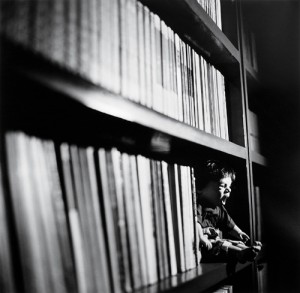
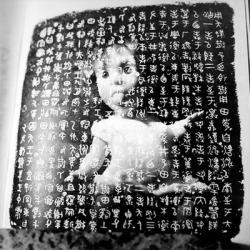
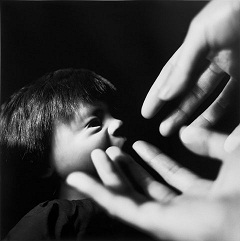
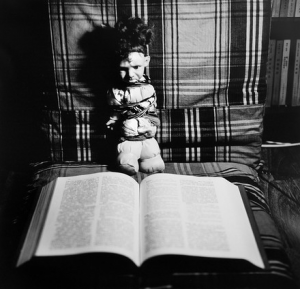
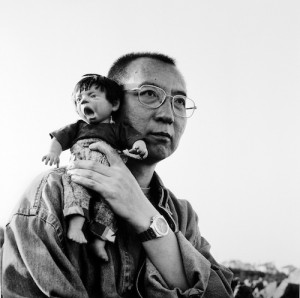
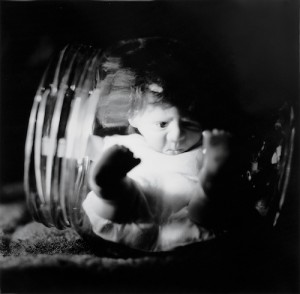
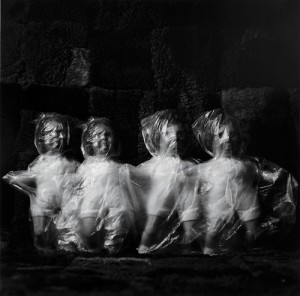
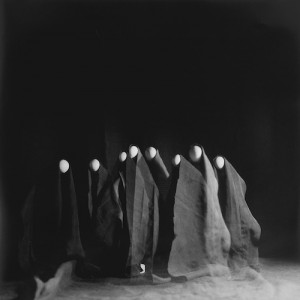
Leave a Reply